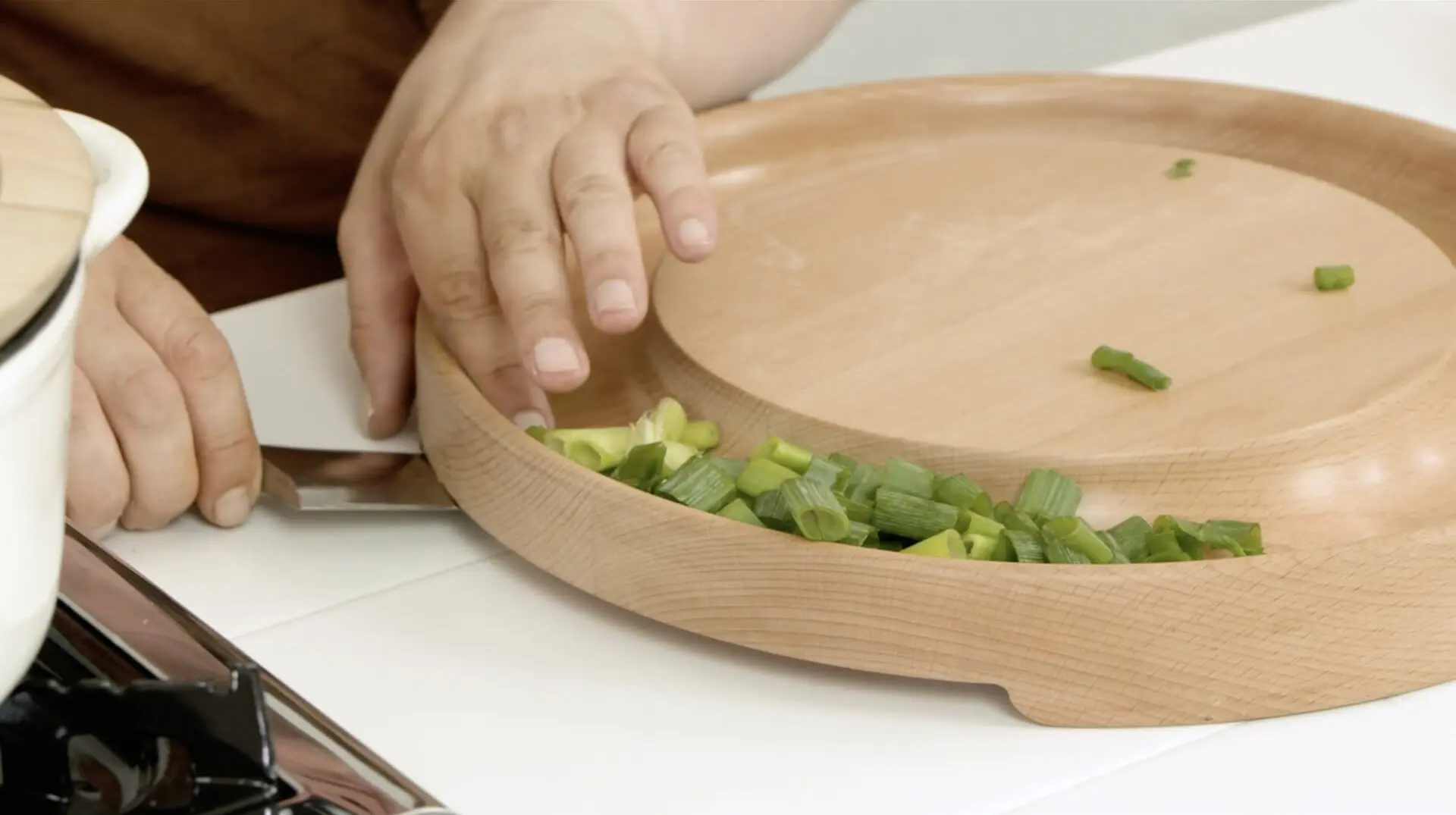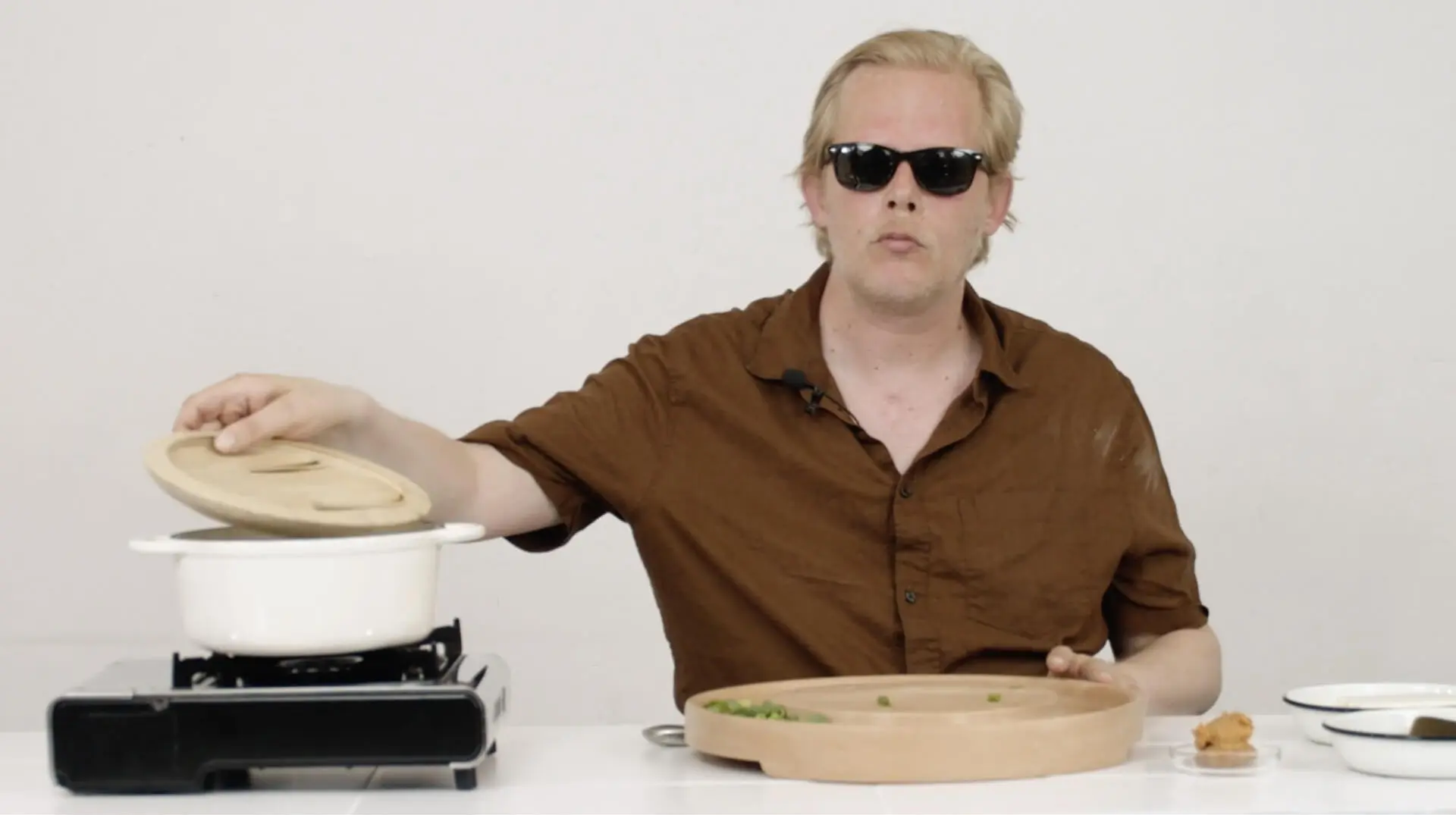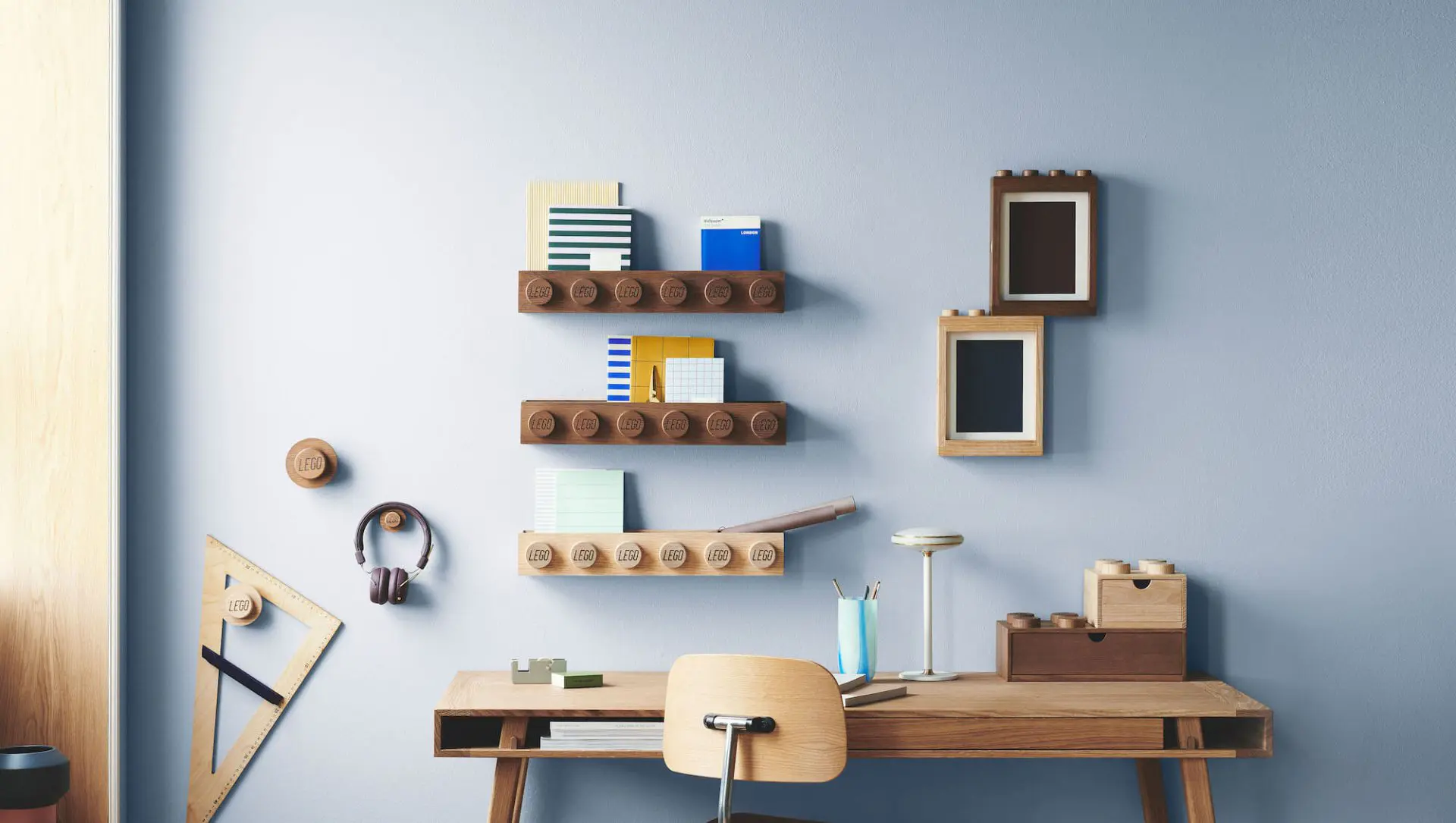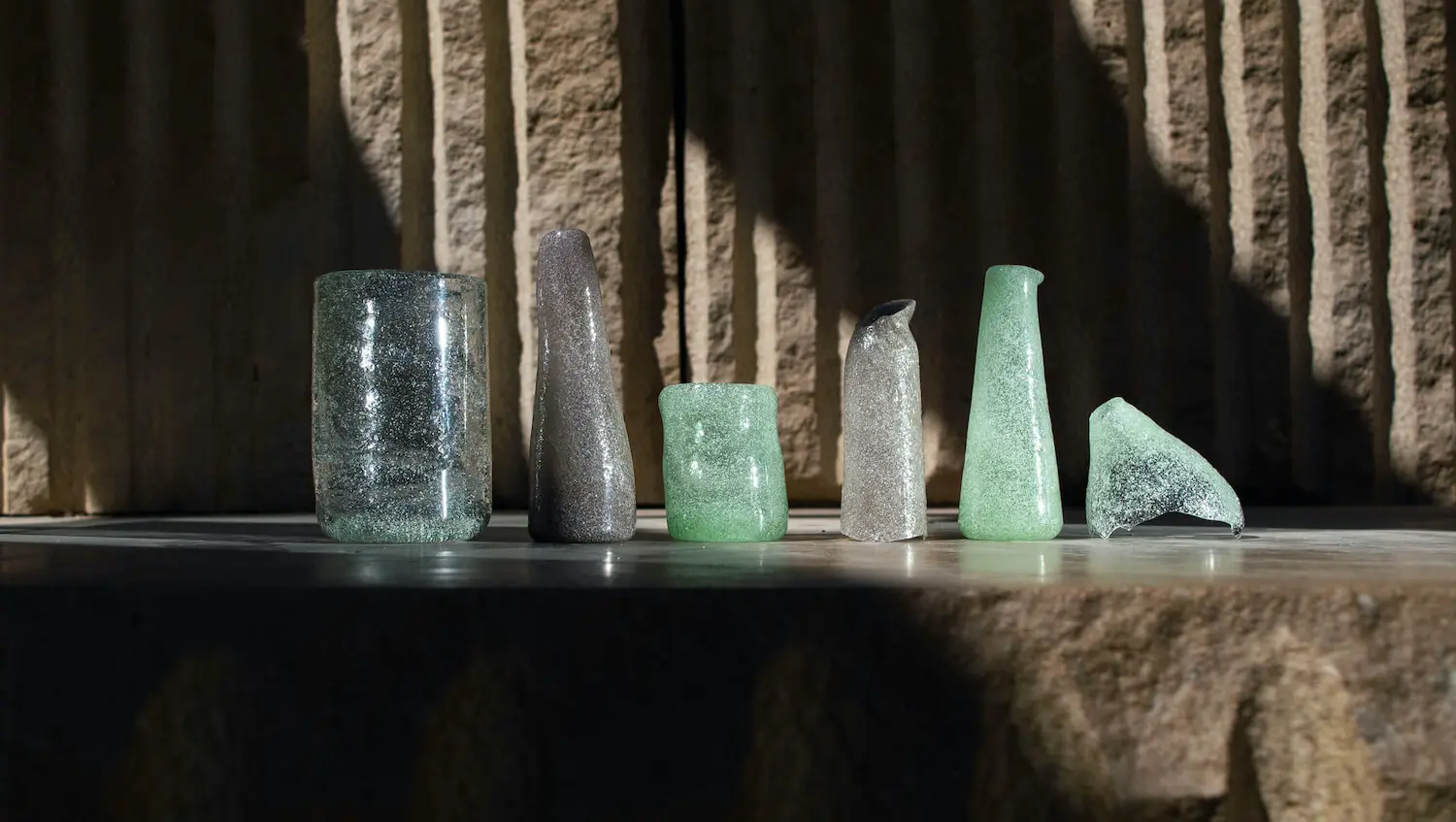Prepare a meal by touch with Haptics of Cooking
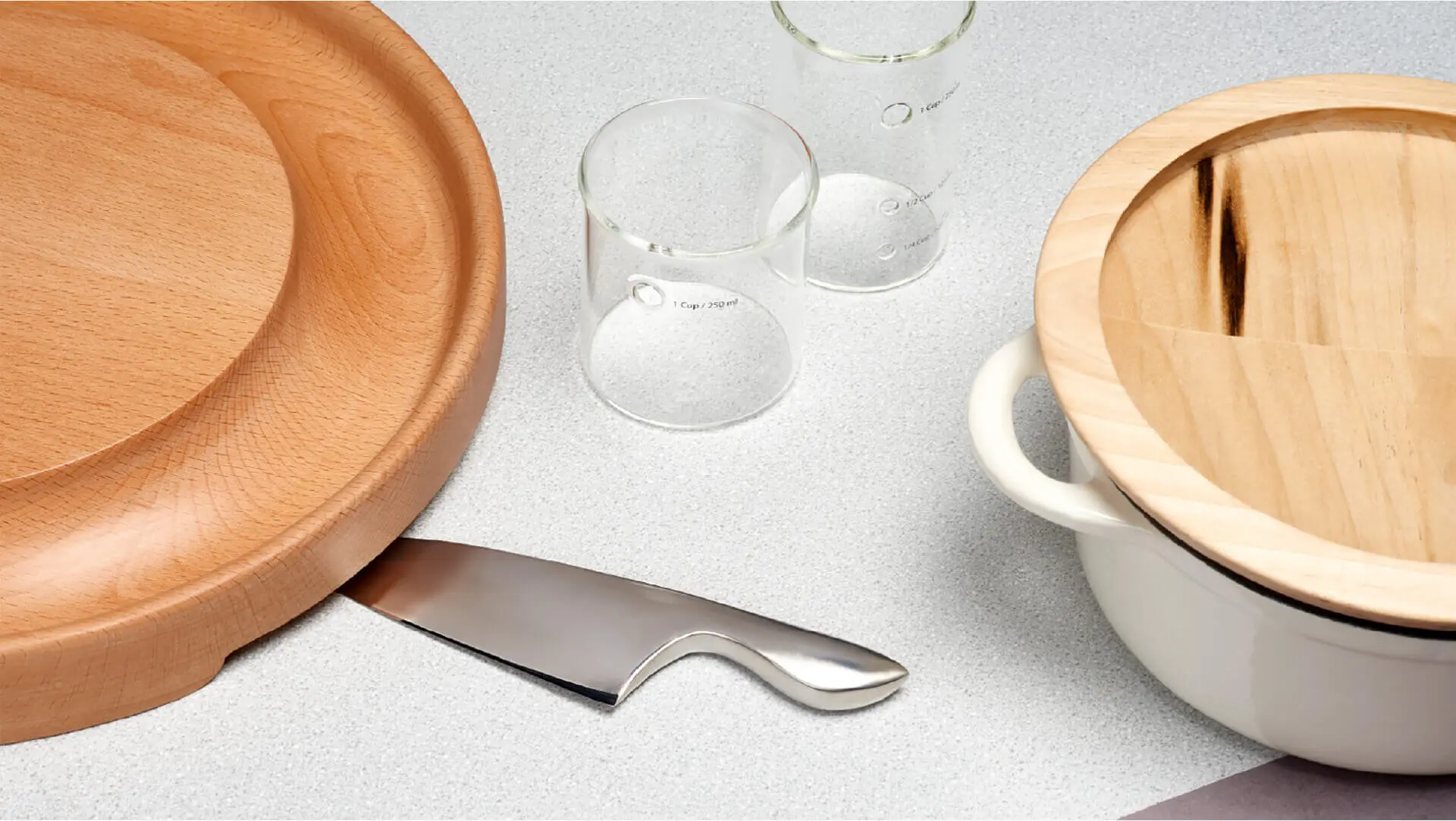
Haptics of Cooking are practical kitchen tools that also offer an insight into cooking with limited or no vision
Imagine for a moment you had to cook yourself a meal without seeing what you are doing. What kind of adaptations would you need so you could still safely complete the tasks? Haptics of Cooking tackles this question directly from a design perspective.
Why Haptics of Cooking? To provide a series of kitchen tools which take us away from our visual dominance and enable a more haptic cooking experience.
Haptics of Cooking was recently presented at Dutch Design Week 2020. DDW is the largest design festival in Northern Europe, and this year showcased designs virtually to more than 50,000 viewers. Materials technology was at the fore in 2020 and Haptics of Cooking was seen alongside several proposals that diverted waste into new sustainable textiles, ceramics, and plastic alternatives.
The minds behind Haptics of Cooking – Studio Boey
Boey Wang is a Chinese designer based in the Netherlands and a recent graduate from the Design Academy Eindhoven. He founded Studio Boey in 2019 and describes himself as a design researcher and object storyteller. Prior to studying design in the Netherlands, he worked as a graphic designer at De Sarth Beijing Contemporary Art Gallery.
Studio Boey projects set out to interrupt the ways that we habitually engage with the world. Based in Eindhoven, ‘Peaceful Islands’ is a wayfinding system that highlights and directs attention to overlooked, but peaceful places within the city. It uses circular mirrors and subtle text signs embedded within the environment to draw people to quiet areas of greenery and the tranquil sounds of water.
Whilst ‘Immeasurable Range’ is a very fluid take on the tools of measurement. It includes a stretchy rubber ruler and a compass that marks circles with a calligraphy paintbrush.
Boey has also completed two comic book projects which depict aspects of contemporary life in China. In 2018, he completed a Comic Residencyat Seriefrämjandet (Swedish Comic Association).
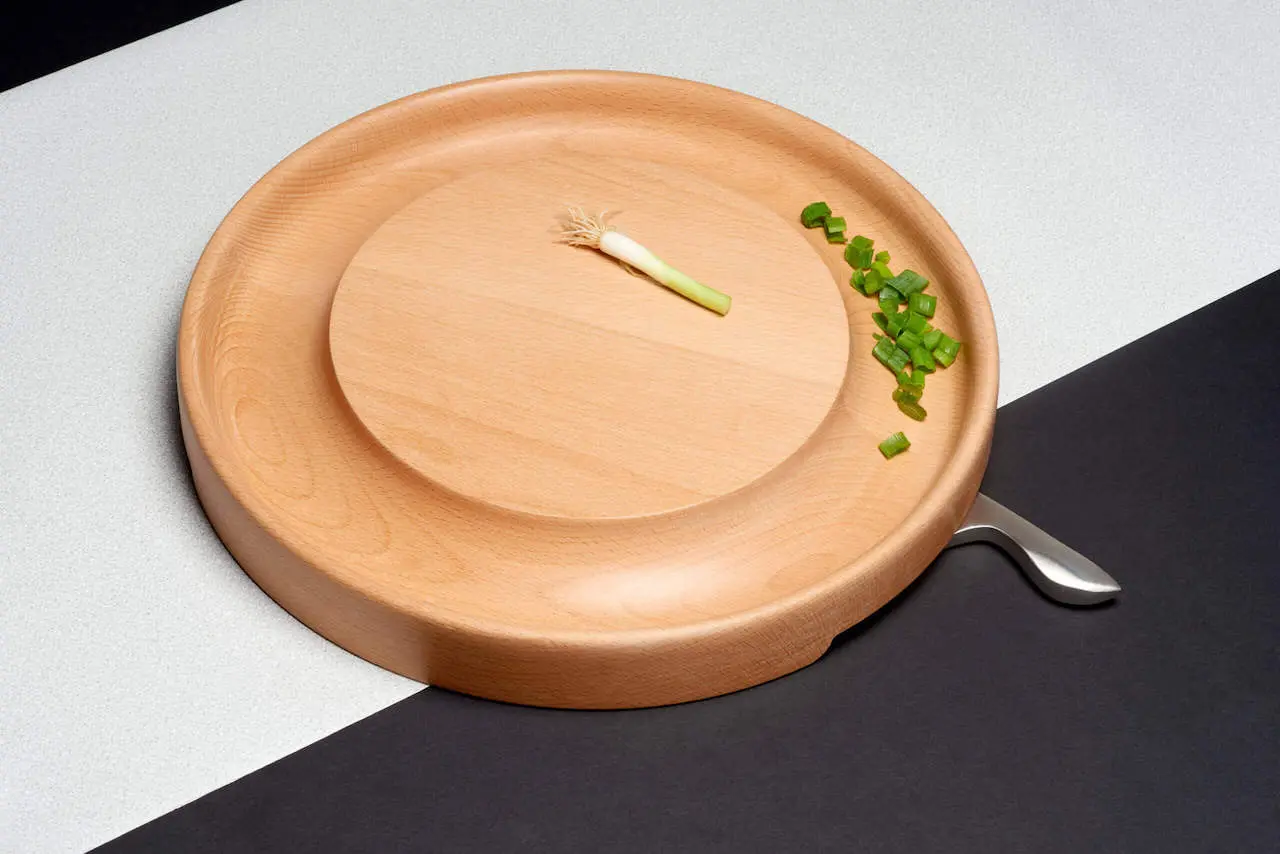
Materials & Techniques – Adapted shapes with simple materiality
A series of four cooking items have been designed for Haptics of Cooking. A cutting board, knife, measuring cups, and a wooden pot cover. Each item is made of a single material, without joins.
The wooden cutting board considers how it is possible to keep everything that has been cut, neatly on the board. A wide groove creates a moat around the edge into which cut food can be pushed. The circular cutting board is 42cm in diameter.
A gap at the base of the cutting board forms a convenient place to tuck the knife out of the way when not cutting. The knife can then be grabbed again easily without worry of accidentally touching the blade.
The stainless steel knife is short and compact, with a length of just 18cm. It is easy to hold, well balanced in weight, and allows the user to get close to the food to stay in control.
For measuring liquids, the two styles of glass beaker have small holes in the side. When blocked with a fingertip, the user can feel when the liquid volume reaches a specific level.
Without sight, locating a hot cooking pot is not so easily done by simply reaching out and touching it. To create a safer system, an alternative pot lid is created from sauna wood. It heats slowly and remains comfortable to touch. The shape is concave and also allows food to be placed onto it. By tilting the lid, the food on top can be effortlessly dropped into the pot beneath.
Interested in knowing more about inclusive designs? Don’t miss Forget the white cane: Sense Five uses ultrasonic and haptic technology to help the visually impaired.

Style & Aesthetics – Beauty not made for the eye
The shape of each item is informed by how it feels in the hand and how it can be used. Concern for aesthetics was superseded by concern for function. Nonetheless, these are beautiful objects.
The platonic shapes and curves give the items a pragmatic simplicity. This, despite possessing characteristics which seem counterintuitive to proper functionality. After all, conventional thinking would not lead to putting holes in the side of a glass measuring beaker.
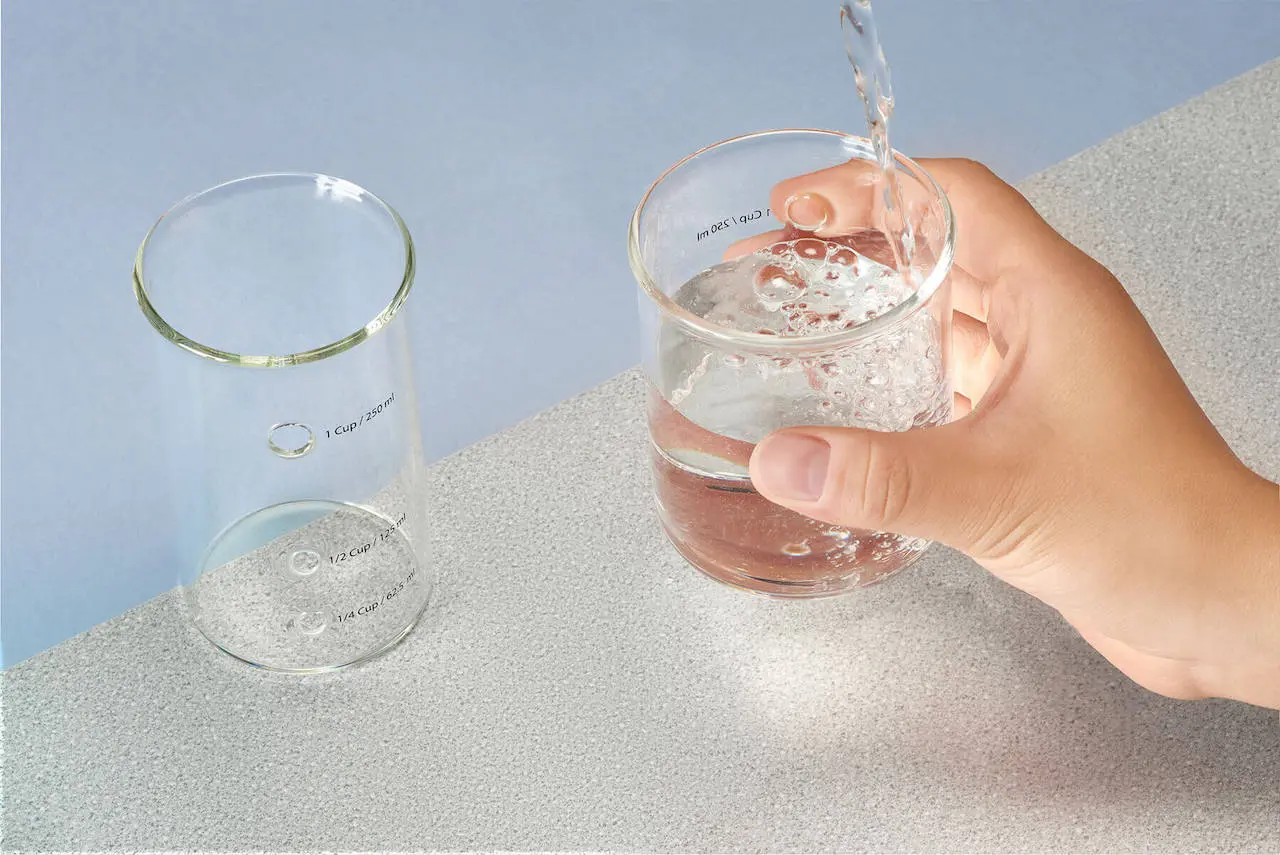
Yes, the blind do cook
As stated in the Haptics of Cooking video, cooking is a wonderful multi-sensory experience. The kitchen is also one of the more hazardous environments that most of us negotiate on a daily basis.
Identifying ingredients and feeling around without sight in an area of sharp and hot objects requires an even higher level of organization and caution. Despite this, many visually impaired people do enjoy cooking regularly. Blind chef Christine Ha even won the 2012 TV series of MasterChef and has made a successful career from cooking.
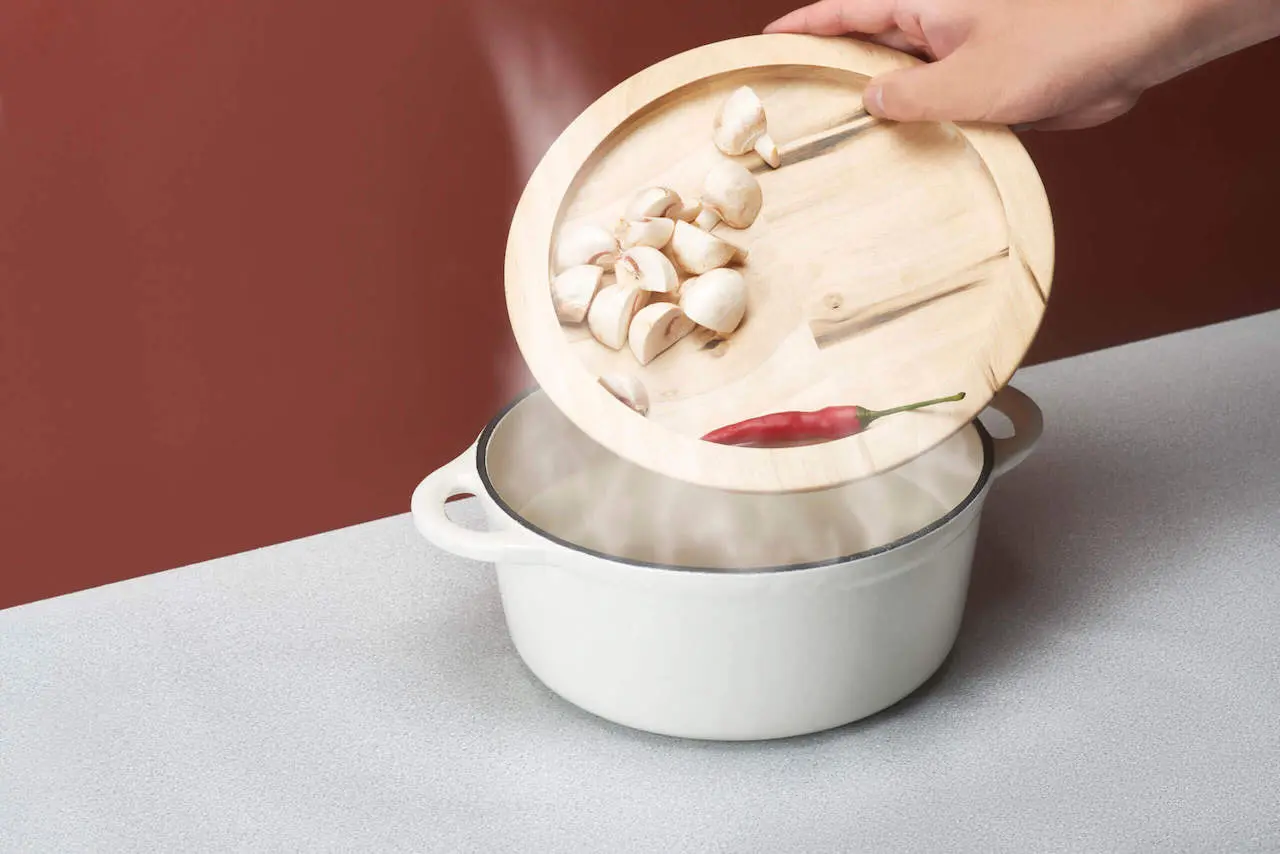
Design memento – Not only for the visually impaired
Each item addresses the question of how you would complete the associated task if you could not see. The resulting tools in the collection are all very thoughtfully considered.
Boey conducted research through interviews and observation. This was followed by extensive rounds of user testing.
Boey also notes that the tools are not only for the visually impaired. They allow intuitive cooking movements and use of the tools by sighted people can also promote new ways of engagement and interaction with the world.
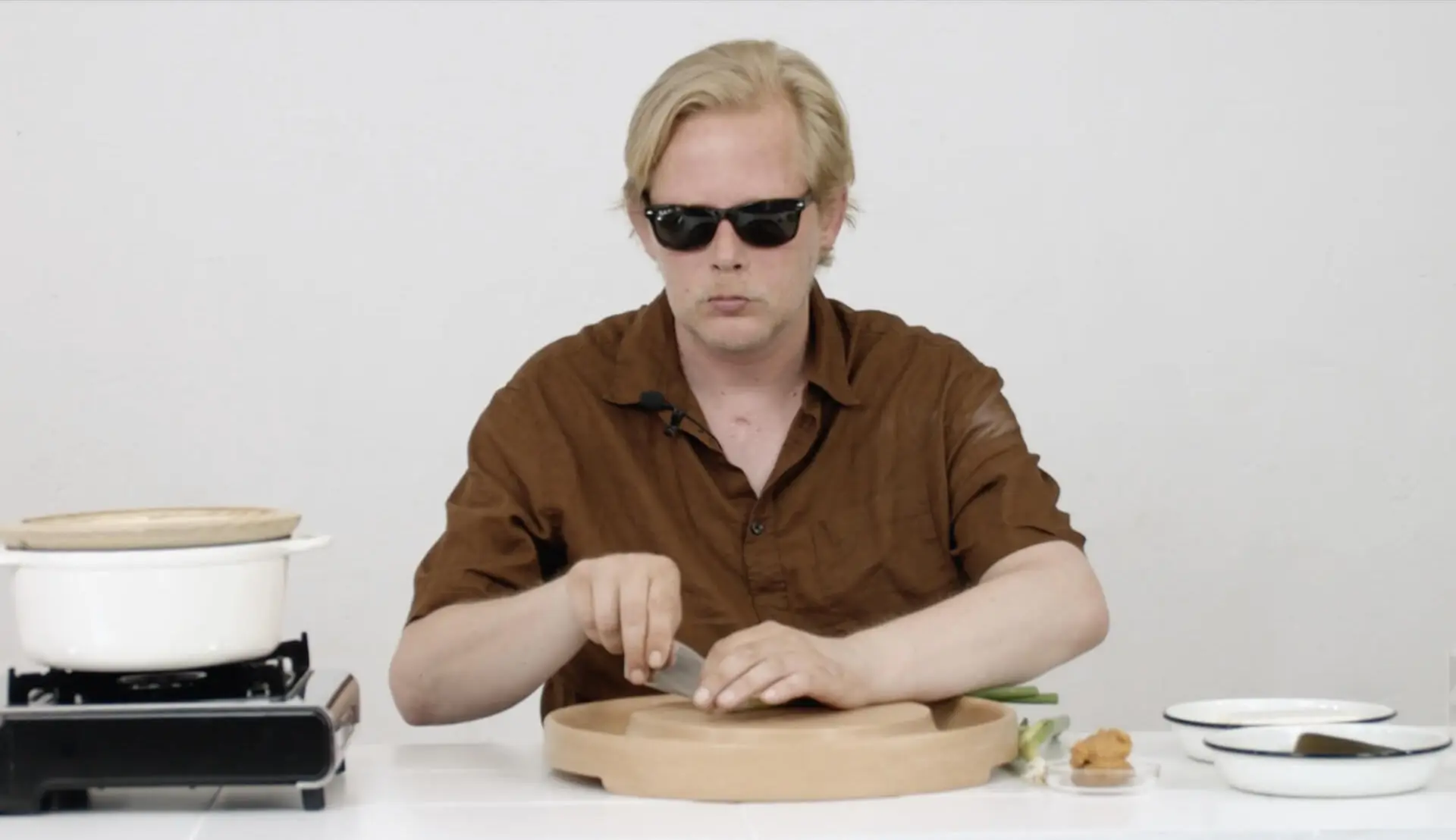
The writer’s comment – Living by touch
Haptics of Cooking is a lovely example of inclusive design. It is not only very functional items that have been designed by directly consulting visually impaired people. They also promote empathy and open a window of understanding for sighted people. The tools introduce a way to contemplate life without vision and to explore living by touch.
Designing with empathy is extremely important, don’t miss the perfect example in Hacking is caring, this e-book helps to design a dementia-friendly home.



